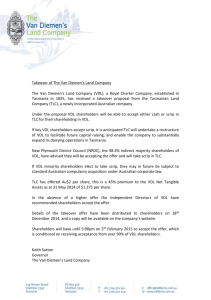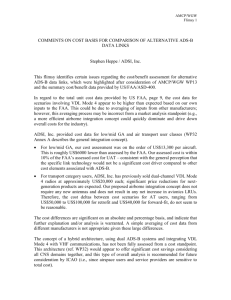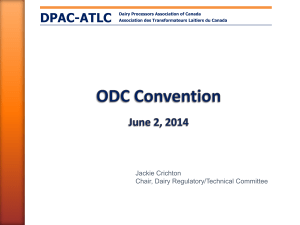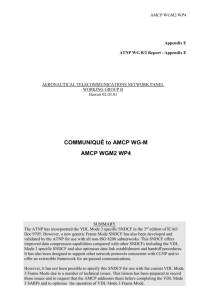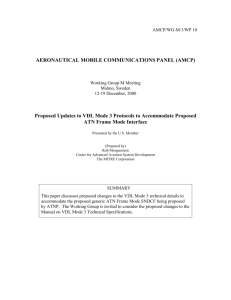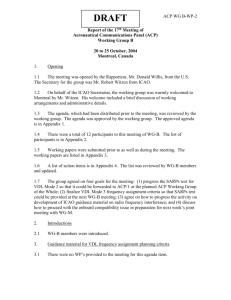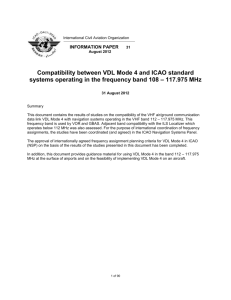Fact Sheet for VDL expansion plans
advertisement
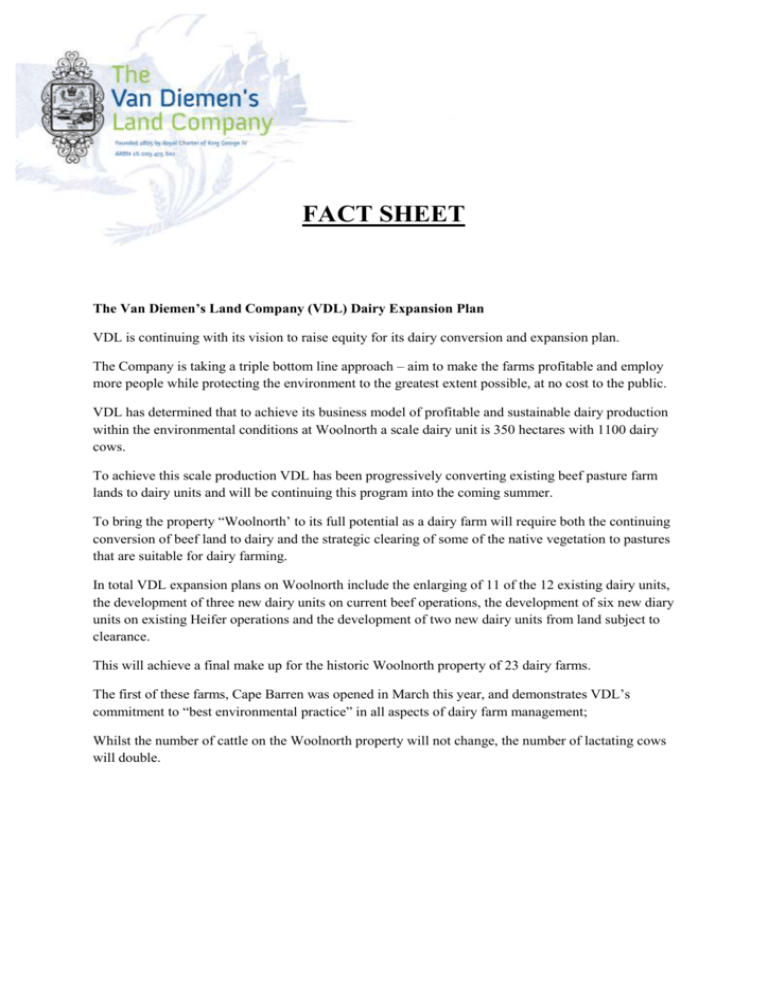
FACT SHEET The Van Diemen’s Land Company (VDL) Dairy Expansion Plan VDL is continuing with its vision to raise equity for its dairy conversion and expansion plan. The Company is taking a triple bottom line approach – aim to make the farms profitable and employ more people while protecting the environment to the greatest extent possible, at no cost to the public. VDL has determined that to achieve its business model of profitable and sustainable dairy production within the environmental conditions at Woolnorth a scale dairy unit is 350 hectares with 1100 dairy cows. To achieve this scale production VDL has been progressively converting existing beef pasture farm lands to dairy units and will be continuing this program into the coming summer. To bring the property “Woolnorth’ to its full potential as a dairy farm will require both the continuing conversion of beef land to dairy and the strategic clearing of some of the native vegetation to pastures that are suitable for dairy farming. In total VDL expansion plans on Woolnorth include the enlarging of 11 of the 12 existing dairy units, the development of three new dairy units on current beef operations, the development of six new diary units on existing Heifer operations and the development of two new dairy units from land subject to clearance. This will achieve a final make up for the historic Woolnorth property of 23 dairy farms. The first of these farms, Cape Barren was opened in March this year, and demonstrates VDL’s commitment to “best environmental practice” in all aspects of dairy farm management; Whilst the number of cattle on the Woolnorth property will not change, the number of lactating cows will double. Extra dairy sheds require water for general operations. This additional water can be sourced from existing winter take water licences from the Welcome River and stored in dams for use across the year. In addition, new sheds and infrastructure have built in rain water capture as is evidenced in the Cape Barren development. The economic and social benefits The dairy expansion plan will: • Bring investment to the local community; • Create local jobs and opportunities both for contractors during the farm development and building stages and in the operation of dairies and heifer breeding programs; • Increased spending on farm inputs. • Allow the introduction of new technology to improve farm productivity. • Increase milk production and Tasmania’s export income. Broad Public and Stakeholder Consultation There has been an ongoing dialogue with a broad range of local community organisations over the past two years and formal dialogue with Local government, State government and Federal Government Ministers and Officials including the Save the Devil Program. Dialogue on a range of Aboriginal issues has been initiated with the Office Aboriginal Heritage in Tasmania and with the local Aboriginal landowners adjoining the Woolnorth property at Preminghana and this dialogue will continue. Detailed dialogue has been initiated with the Tasmanian Conservation Trust including site visits, sharing of planning documents and responses and changes to initial land clearance development plans based on the formal inputs provided by the TCT. VDL has substantially amended its original dairy expansion and land clearance plan as a result of the consultation. Land Clearance Program VDL has undertaken detailed ecological and vegetation studies over the past three years to assess best balance between further clearing, pasture development and retention of native vegetation on the Woolnorth Properties. VDL has worked with the state and federal regulatory authorities to develop a "whole of farm" plan so that a long term sustainable future can be approved for the property. It is proposed to commence the action as soon as the necessary regulatory approvals are provided. It is expected that land clearance and pasture establishment will occur over two to three years from the date of commencement. VDL is proposing to clear 1818 hectares of native vegetation on the property “Woolnorth”. VDL will formally protect 3421 hectares of native vegetation and voluntarily protect a further 876 hectares. That means a total of 4297 hectares or just over 70% of the native vegetation on the Woolnorth properties will be protected. The EPBC submission includes a detailed analysis of the number of devils on Woolnorth, their hunting and denning requirements and behaviour. Devils thrive in a landscape mosaic of native habitat and agricultural land. The population uses all of the habitat mosaic but typically does not use areas of pasture more than 500 m from continuous habitat. A series of trapping surveys have been completed on Woolnorth by the Save the Tasmanian Devil Program. Three trapping surveys in Dec 2009, March and May 2010 covered approximately 80% of the property. The survey trapped 287 devils. Population estimates gained from the program gave a population size estimate of 561 devils for the areas trapped, equating to a density of approximately 4 devils per km2. Population demographics including abundance, reproductive cycles and age structure, as well as a thorough examination of each devil caught, indicated that the Woolnorth population is a thriving, healthy population. It appears that the scrub/forest – agricultural land mosaic suits devils well, giving them suitable habitat for denning while providing habitat for their prey. The Woolnorth property has been identified as a disease free area within which it may be possible to protect devils from disease by fencing to prevent diseased animals from entering. A devil proof fence is proposed to be constructed to protect the Woolnorth devils from the Devil Tumour Facial Disease as part of the wider development opportunity. Environmental Protection Measures & Offsets The approach taken by VDL to mitigating the impact of clearance is to avoid habitats where feasible, minimise impacts where not feasible to avoid them, and to offset the residual impact. The table below lists the biodiversity constraints and the area in ha’s proposed by VDL Co to set aside to protect each value. (includes areas in common). Constraint Devil-Quoll native habitat Threatened Vegetation Eagle Nesting Habitat Marrawah Skipper Habitat DwarfGalaxiasHabitat GGoshawkHabitat OwlHabitat StripedMarshFrog Existing ha Protected ha 5943 4297 1915 311 1751 311 10 10 309 269 269 2 296 269 269 2 Other mitigation measures proposed include: A devil proof fence to prevent the spread of the DFTD to Woolnorth is proposed to be constructed to protect the population(s). Further mitigation, across the whole impact area, will include the establishment of native vegetation and fencing along key drainage lines. This will serve the dual purpose of providing additional habitat for connectivity between remnant vegetation patches that does not currently exist and the enhancement of water quality. The plan includes the protection of core denning habitat, extensive areas of forest and connectivity of remnants to ensure the complete utilisation of the existing home ranges. The denning habitat is continuously connected to home ranges by the retention of existing forest as corridors. The frequency of connections is enhanced by the habitat restoration along additional corridors crossing existing open pasture. The clearance will be staged to maximise the potential to avoid dens during the breeding season. Non-core habitats that are unsuitable for dens (damp) will be cleared first. The remaining habitat will be cleared once the breeding season is completed. This strategy will minimise the potential to destroy occupied dens. VDL will also investigate creating habitats suitable for natal dens elsewhere through building rock, log and earth piles with suitable structures to provide dry dens on the lee edges of dry forest and allowing protective vegetation to regenerate on and around them.

